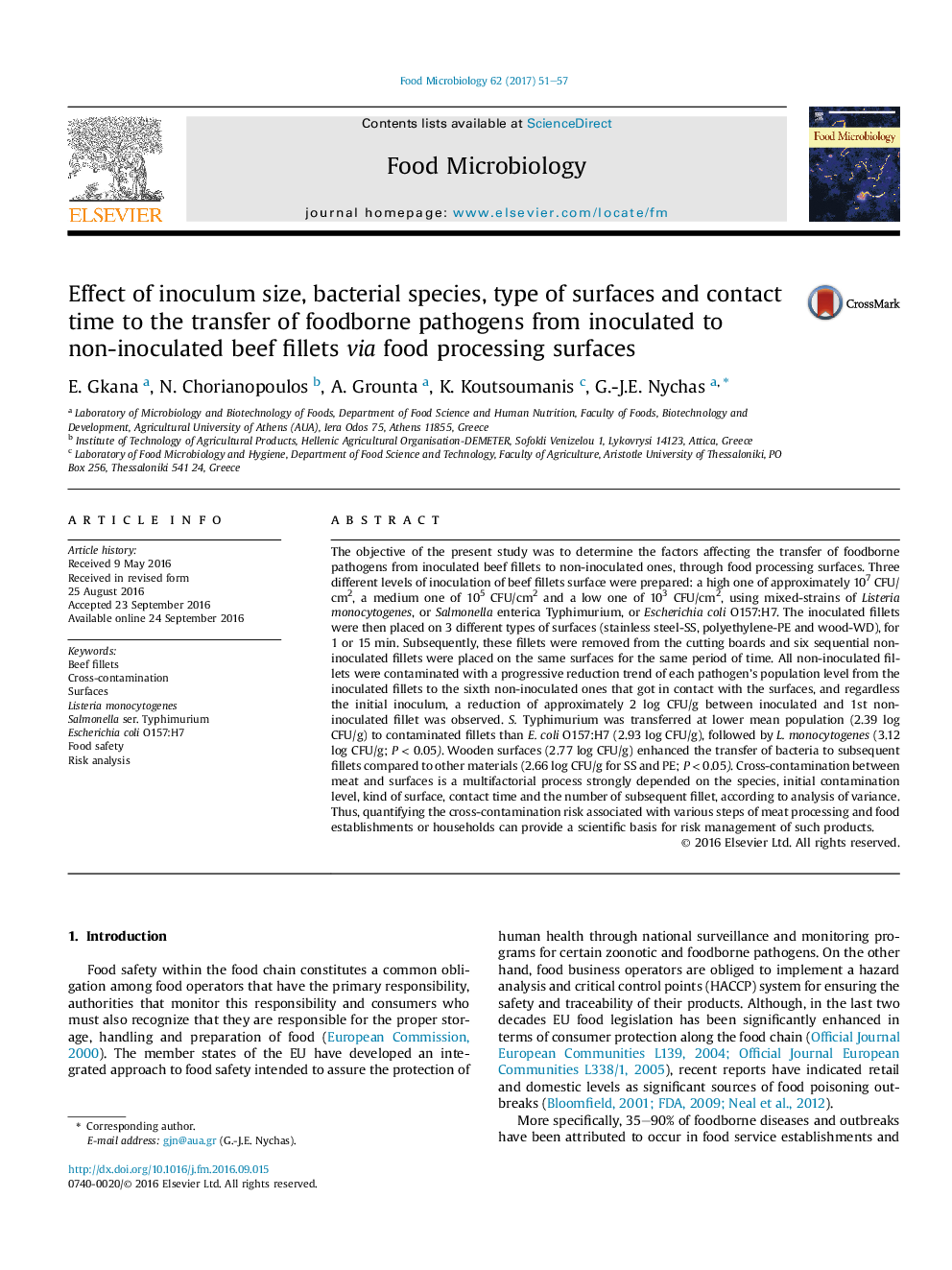| کد مقاله | کد نشریه | سال انتشار | مقاله انگلیسی | نسخه تمام متن |
|---|---|---|---|---|
| 4362532 | 1616239 | 2017 | 7 صفحه PDF | دانلود رایگان |
عنوان انگلیسی مقاله ISI
Effect of inoculum size, bacterial species, type of surfaces and contact time to the transfer of foodborne pathogens from inoculated to non-inoculated beef fillets via food processing surfaces
ترجمه فارسی عنوان
تأثیر اندازه علف هرز، گونه های باکتریایی، نوع سطوح و زمان تماس برای انتقال پاتوژن های غذای خوراکی از گوشت گاو های غیر منعقد شده از طریق سطح مواد غذایی
دانلود مقاله + سفارش ترجمه
دانلود مقاله ISI انگلیسی
رایگان برای ایرانیان
کلمات کلیدی
موضوعات مرتبط
علوم زیستی و بیوفناوری
علوم کشاورزی و بیولوژیک
دانش تغذیه
چکیده انگلیسی
The objective of the present study was to determine the factors affecting the transfer of foodborne pathogens from inoculated beef fillets to non-inoculated ones, through food processing surfaces. Three different levels of inoculation of beef fillets surface were prepared: a high one of approximately 107 CFU/cm2, a medium one of 105 CFU/cm2 and a low one of 103 CFU/cm2, using mixed-strains of Listeria monocytogenes, or Salmonella enterica Typhimurium, or Escherichia coli O157:H7. The inoculated fillets were then placed on 3 different types of surfaces (stainless steel-SS, polyethylene-PE and wood-WD), for 1 or 15 min. Subsequently, these fillets were removed from the cutting boards and six sequential non-inoculated fillets were placed on the same surfaces for the same period of time. All non-inoculated fillets were contaminated with a progressive reduction trend of each pathogen's population level from the inoculated fillets to the sixth non-inoculated ones that got in contact with the surfaces, and regardless the initial inoculum, a reduction of approximately 2 log CFU/g between inoculated and 1st non-inoculated fillet was observed. S. Typhimurium was transferred at lower mean population (2.39 log CFU/g) to contaminated fillets than E. coli O157:H7 (2.93 log CFU/g), followed by L. monocytogenes (3.12 log CFU/g; P < 0.05). Wooden surfaces (2.77 log CFU/g) enhanced the transfer of bacteria to subsequent fillets compared to other materials (2.66 log CFU/g for SS and PE; P < 0.05). Cross-contamination between meat and surfaces is a multifactorial process strongly depended on the species, initial contamination level, kind of surface, contact time and the number of subsequent fillet, according to analysis of variance. Thus, quantifying the cross-contamination risk associated with various steps of meat processing and food establishments or households can provide a scientific basis for risk management of such products.
ناشر
Database: Elsevier - ScienceDirect (ساینس دایرکت)
Journal: Food Microbiology - Volume 62, April 2017, Pages 51-57
Journal: Food Microbiology - Volume 62, April 2017, Pages 51-57
نویسندگان
E. Gkana, N. Chorianopoulos, A. Grounta, K. Koutsoumanis, G.-J.E. Nychas,
